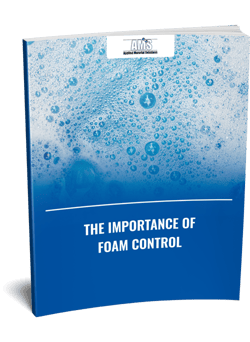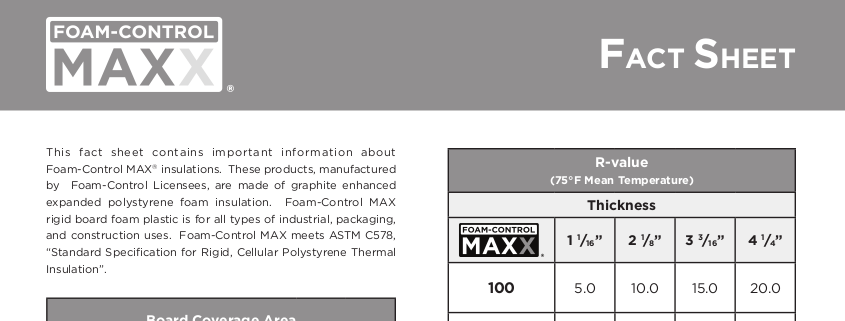A Comprehensive Overview to Applying Foam Control Solutions in Your Workflow
Effective foam control is a vital element of functional performance that frequently goes neglected. Understanding the complexities of foam generation can significantly affect both performance and item high quality. By taking a look at crucial elements such as application compatibility and personnel training, organizations can optimize their foam management initiatives.
Comprehending Foam Difficulties
Foam difficulties are a significant concern across different markets, affecting functional effectiveness and item high quality. The formation of too much foam can prevent procedures such as mixing, transport, and storage space, causing boosted downtime and waste. In markets like food and drink, pharmaceuticals, and petrochemicals, foam can disrupt manufacturing lines, triggering product disparities and contamination dangers.
Moreover, foam can obstruct devices functionality, bring about expensive repairs and maintenance. In wastewater treatment, foam can interrupt clarifier procedures, resulting in lower therapy performance and regulative conformity issues.
Understanding the underlying reasons for foam generation is important for effective monitoring. Factors such as surfactants, temperature variations, and frustration levels can all add to foam manufacturing. Recognizing these elements permits sectors to apply targeted methods that reduce foam development while preserving item honesty.
Kinds Of Foam Control Solutions

Mechanical options involve making use of devices such as foam skimmers or defoamers. These tools literally remove foam from the surface of fluids, therefore avoiding overflow and preserving ideal levels in storage tanks and reactors. Chemical services, on the various other hand, consist of the application of defoaming agents-- materials that interrupt the foam framework, leading to its collapse. These representatives can be silicone-based, organic, or aqueous, each offering distinctive advantages depending upon the application setting.
Finally, functional techniques concentrate on process changes. This might involve customizing devices specifications, such as temperature level and pressure, or altering the flow rates of fluids to minimize foam generation. Applying good housekeeping techniques can likewise reduce foam development by lowering impurities that add to foam stability.
Selecting the suitable foam control remedy entails examining the certain needs of the operation, consisting of the type of process, the characteristics of the materials included, and safety factors to consider.
Selecting the Right Products
Choosing the appropriate foam control items requires a complete understanding of the specific application and its unique obstacles. Variables such as the sort of foam, the atmosphere in which it happens, and the wanted outcome all play crucial roles in item selection. Foam Control. In sectors such as food handling, it is imperative to choose food-grade defoamers that comply with safety guidelines while successfully managing foam.
Additionally, take into consideration the viscosity of the liquid where the foam issue exists. Some products are formulated for low-viscosity applications, while others are customized for thicker liquids. Compatibility with existing procedures is an additional critical element; the picked foam control representatives should incorporate seamlessly without interrupting total go right here operations.
An additional essential factor is the approach of application. Some products may require dilution, while others can be used directly. Assessing the simplicity of use and the required dose can supply insights into the item's effectiveness and cost-effectiveness.
Implementation Strategies
Effective application strategies for foam control options need a systematic method that straightens item selection with operational demands. The initial step involves a detailed analysis of the processes where foam takes place, recognizing certain locations that require intervention. By engaging cross-functional groups, including top quality, manufacturing, and engineering guarantee, companies can collect insights that notify the selection of one of the most reliable foam control items.
Following, it is vital to develop clear purposes for foam reduction, ensuring that these goals are attainable and measurable. This may involve specifying acceptable foam degrees and the timelines for application. Educating personnel on the homes and application methods of picked foam control agents is similarly essential, as proper use is essential for optimal outcomes.
Furthermore, integrating foam control options into existing workflows calls for cautious preparation. Organizations needs to create a phased implementation plan, permitting adjustments based on first outcomes. Routine communication and feedback loopholes with staff associated with the procedure will promote timely problem-solving and foster a society of continuous improvement. Inevitably, a well-structured approach will certainly improve functional performance while successfully handling foam-related challenges.
Monitoring and Evaluating Effectiveness
Surveillance and reviewing the performance of foam control options is necessary for ensuring that executed methods produce more info here the wanted outcomes. This process involves systematic data collection and analysis to evaluate the performance of foam control representatives and techniques. Secret performance signs (KPIs) must be developed before implementation, enabling a clear standard against which to measure progress.

Assessing performance additionally requires periodic evaluations of foam control procedures and agent effectiveness. This can be completed with sampling and screening, allowing drivers to determine if current remedies are satisfying functional requirements. It is vital to obtain responses from group members who communicate with these systems daily, as their understandings can reveal functional subtleties that quantitative information may forget.

Eventually, an organized tracking and evaluation framework assists identify essential adjustments, ensuring that foam control options stay efficient, affordable, and aligned with organizational objectives.
Verdict
Finally, efficient foam control services are important for optimizing functional performance and preserving product top quality. A thorough understanding of foam obstacles, integrated with the choice of appropriate items and application techniques, facilitates the effective administration of foam generation. Investing and developing measurable kpis in employees training further enhance the effectiveness of foam control actions. Normal tracking and evaluation make sure continuous improvement, eventually causing a more streamlined and productive functional environment.
Carrying out good housekeeping techniques can likewise mitigate foam development by minimizing contaminants that add to foam stability.
Picking the ideal foam control items calls for an extensive understanding of the specific application and its one-of-a-kind challenges (Foam Control).Successful execution strategies for foam control options call for a methodical method that aligns item selection with operational requirements.In conclusion, efficient foam control solutions are necessary for optimizing operational performance and keeping product high quality. An extensive understanding of foam obstacles, incorporated with the selection of ideal items and implementation methods, assists in the effective hop over to these guys management of foam generation
Comments on “The Function of Foam Control in Wastewater Treatment: Ideal Approaches and Techniques”